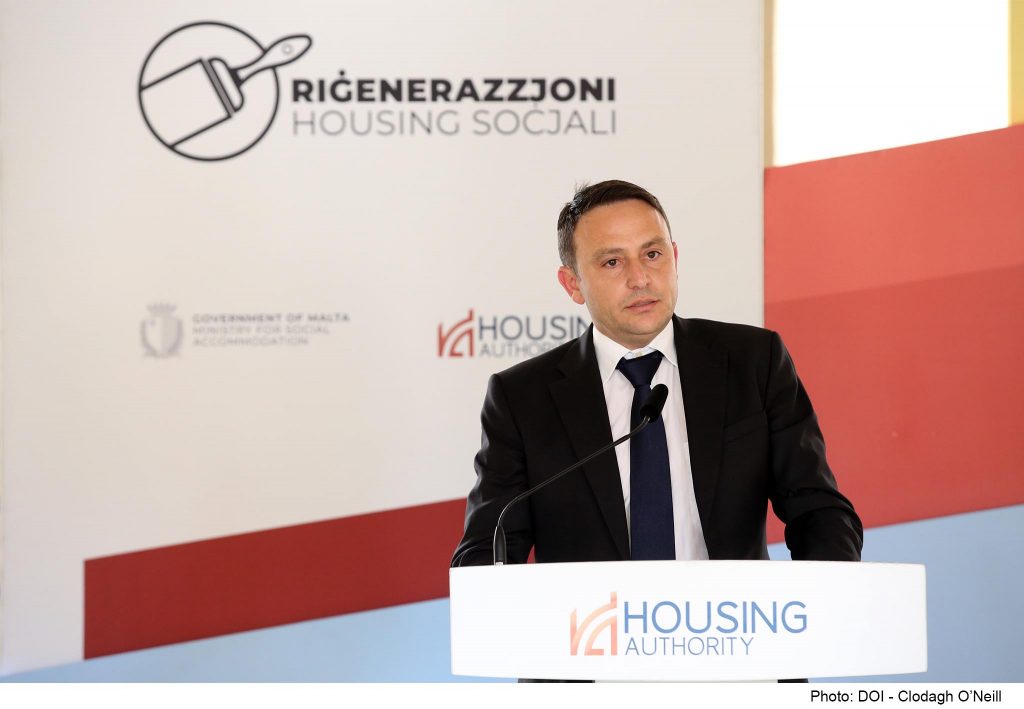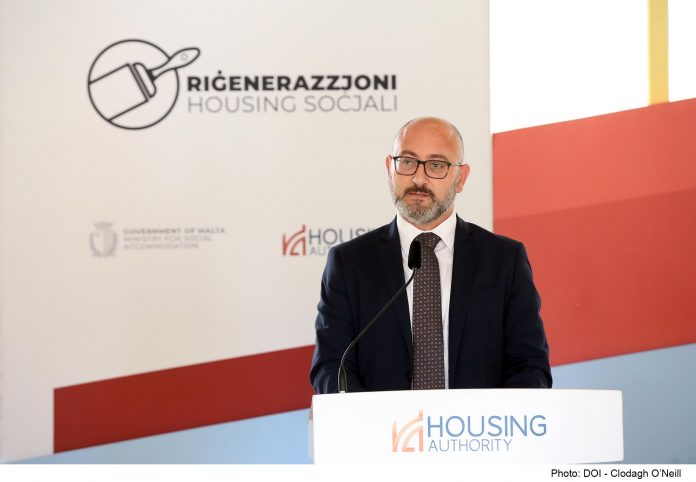The Ministry for Social Accommodation has announced that the regeneration of Binja Buqana in Mtarfa is complete. This regeneration took place after a study commissioned in 2015 certified that the building was not safe for the 80 families who live in it. The study was commissioned after doubt on the building’s safety surfaced. The building was built and sold in the years between 1992 and 1994.
“With this project, a tragedy was avoided,” claimed Minister for Social Accommodation Roderick Galdes. “The analysis confirmed that the eighty families who were living in the apartment block were indeed in a grave situation. We found a faulty structure that led to water leaking to the lower floors, blockages, and severe deterioration of the building’s structural framework.”
“International engineering firm ARUP’s report confirmed that the previous administration not only allowed housing to deteriorate, but those that it built were built with inferior concrete. One cannot boast about and sell from an accommodation project and at the same time endanger the lives of 80 families,” added Minister Roderick Galdes. He stressed upon the high cost of incompetence, meaning that, at the same cost of construction works in Mtarfa, the Housing Authority shall be regenerating 40 blocks across Malta in its wide-ranging regeneration programme renovating all blocks of social housing built long before Binja Buqana.
Minister Galdes explained how the Housing Authority was not legally obliged to undertake the necessary repairs in this change, but said that the social soul of the government led to this intervention. An intervention that, in his words, removed the danger for 80 families who can now sleep peacefully in their own home.

The Housing Authority’s CEO Leonid Mckay gave a list of the works carried out on the building to avoid danger. Amongst other things, the basement, which includes 99 garages, and the sections of the common parts upon which 80 private apartments rest were strengthened, the concrete was repaired in certain parts and serious cracks in the building were addressed, the plastering was done and the building was painted. Waterproofing was also carried out, the tiles were laid and the pipes of certain parts were replaced. Reinforcement work was carried out in the parts of the condominium, the concrete was repaired, and coating was given while the roofing membrane was replaced. Works were carried out even in the apartments, especially on the balconies, a major source of the danger caused. Overall, a new look has been given to the facades to prevent water from entering the cracks in the ceiling and to make the area’s appearance aesthetically pleasing.
The Housing Authority invested a total of €2.9 million in this project.











